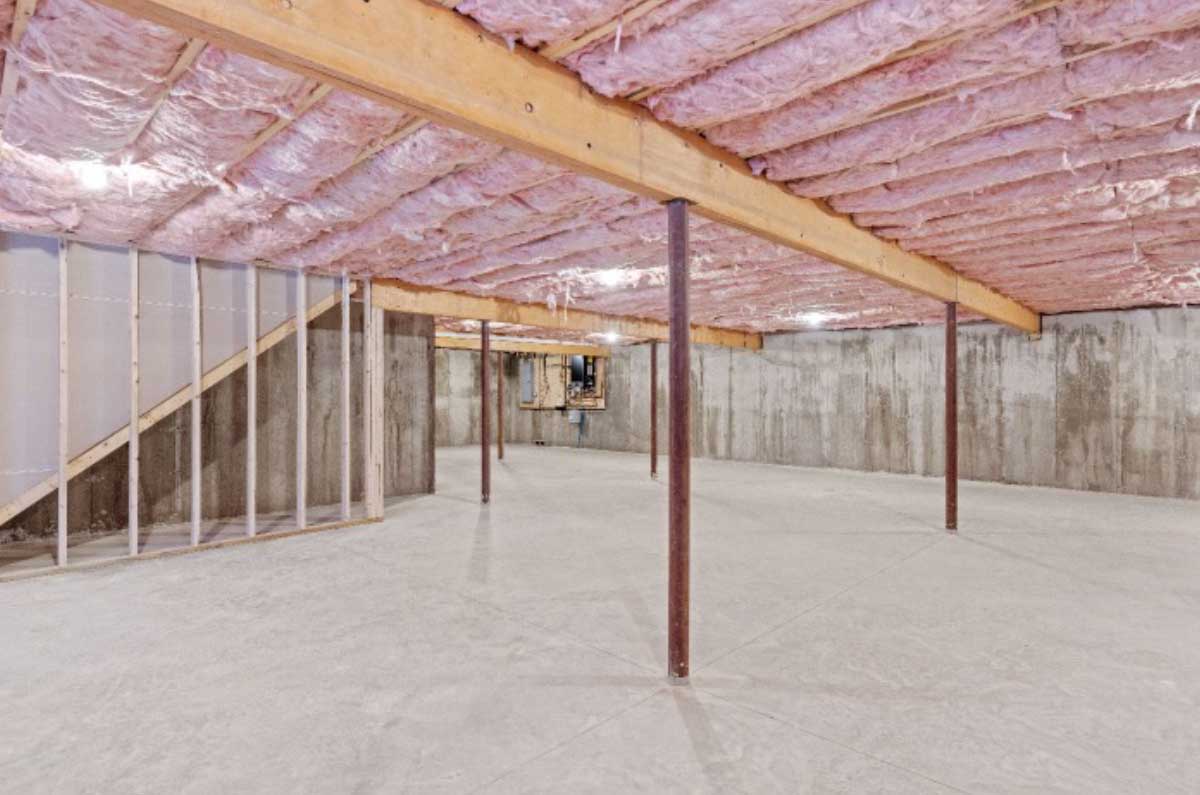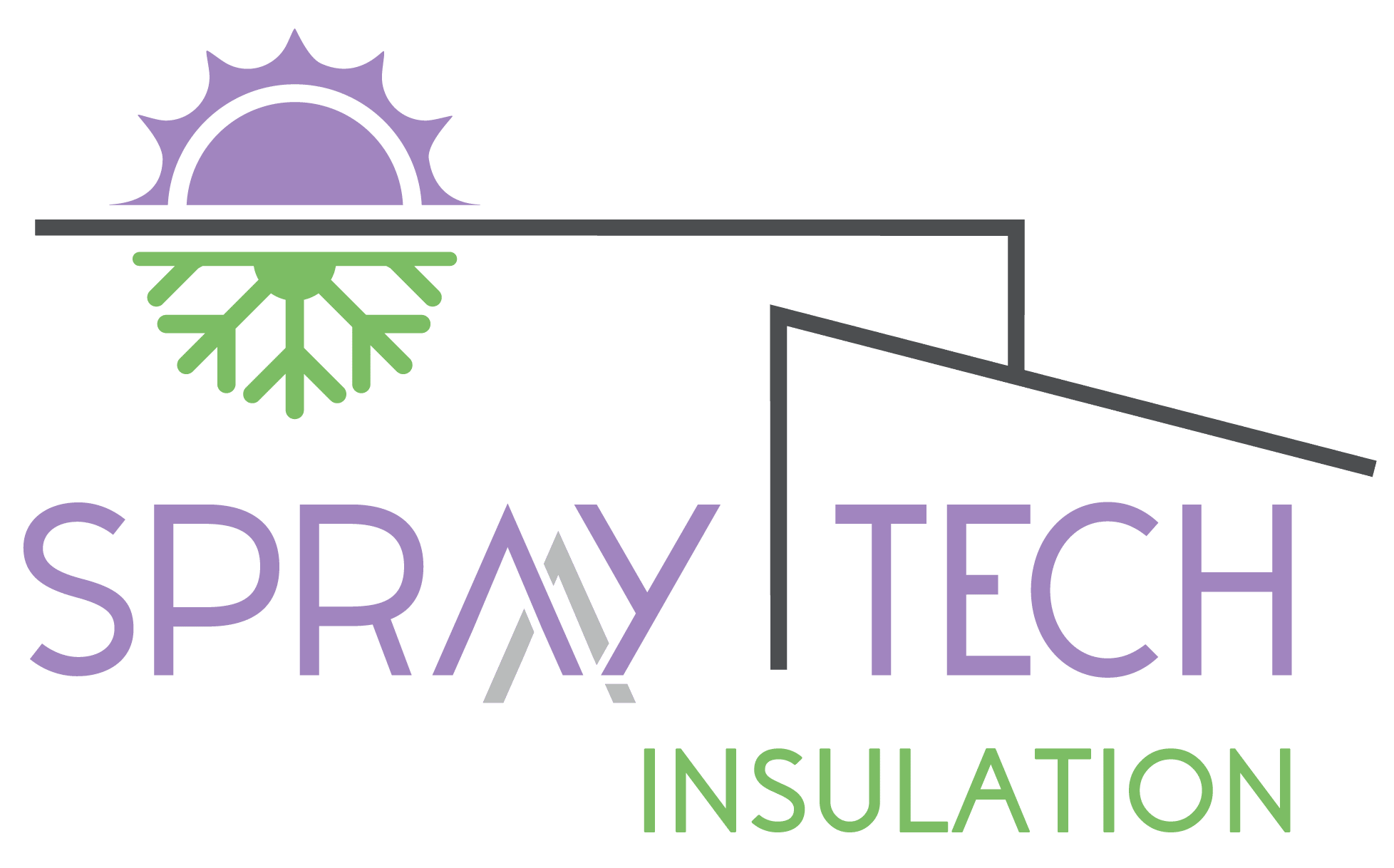
Insulating concrete basement walls is a crucial step in creating an energy-efficient home. Many homeowners overlook this area, but properly insulated basement walls can significantly impact comfort and utility costs. Insulating concrete basement walls is highly recommended for improved energy efficiency, moisture control, and overall comfort in your home.
Basements often account for a substantial portion of heat loss in a house. By adding insulation to concrete walls, you can reduce heat transfer and maintain a more consistent temperature throughout the year. This not only makes the basement more comfortable but also helps lower energy bills by reducing the workload on heating and cooling systems.
Proper insulation also helps control moisture, a common problem in basements. By creating a barrier between the cool concrete and warm indoor air, insulation can prevent condensation and reduce the risk of mold growth. Ultimately, this contributes to a healthier living environment and protects the structural integrity of your home.
Key Takeaways
- Insulating concrete basement walls enhances energy efficiency and comfort
- Proper insulation helps control moisture and prevent mold growth
- Various insulation methods are available to suit different basement configurations
The Importance of Insulating Concrete Basement Walls
Insulating concrete basement walls is a crucial step in creating an energy-efficient home. It helps regulate temperature, reduce energy costs, and prevent moisture-related issues.
Uninsulated concrete walls can lead to significant heat loss in winter and unwanted heat gain in summer. This forces heating and cooling systems to work harder, increasing energy consumption and utility bills.
Proper insulation creates a barrier against moisture, reducing the risk of mold growth and structural damage. It also helps maintain a comfortable living environment in the basement area.
Is it worth insulating basement walls?
The answer is generally yes. The initial investment often pays off through:
- Lower energy bills • Increased comfort • Improved air quality • Enhanced property value
What happens if concrete basement walls are left uninsulated? Potential consequences include:
- Higher energy costs • Cold, damp spaces • Condensation issues • Increased risk of mold and mildew
Exterior insulation can be particularly effective for basements, as it helps keep the concrete walls at a more stable temperature. This reduces the risk of condensation and thermal bridging.
Insulated basement walls also contribute to the overall energy efficiency of the home. It creates a continuous thermal envelope, maximizing the effectiveness of insulation in other areas of the house.
Understanding Basement Insulation Fundamentals
Proper basement insulation is crucial for energy efficiency and comfort. It involves key concepts like R-value and vapor barriers, which play essential roles in creating an effective insulation system.
R-Value Explained
R-value measures the insulation’s thermal resistance. Higher R-values indicate better insulating properties. For concrete basement walls, R-10 to R-20 insulation is typically recommended, depending on climate and local building codes.
Different materials offer varying R-values per inch of thickness. Foam board insulation provides a high R-value in a thin profile, while fiberglass batts require more thickness for equivalent performance.
Climate influences insulation needs. Colder regions demand higher R-values to maintain comfortable indoor temperatures and prevent heat loss.
The Role of Vapor Barriers
Vapor barriers control moisture movement through walls. They prevent warm, moist indoor air from condensing on cold concrete surfaces, which can lead to mold and mildew growth.
Non-water sensitive insulation should be used against concrete walls. This approach allows the concrete to breathe while still providing thermal protection.
Proper placement of vapor barriers is critical. In most cases, they should be installed on the warm side of the insulation to prevent moisture from becoming trapped within the wall assembly.
Some insulation materials, like closed-cell spray foam, act as both insulation and vapor barrier, simplifying the installation process.
Insulating Methods for Concrete Basement Walls
Proper basement insulating methods enhance energy efficiency and comfort. Two main approaches are available, each with distinct advantages and considerations.
Traditional Framing and Insulation Techniques
Framing basement walls is a common insulation method. This technique involves building a wood frame against the concrete wall and filling it with insulation.
The process starts by constructing a standard wall frame using studs. Spacing studs 16″ or 24″ apart allows for easy fitting of insulation batts.
Fiberglass batts are a top pick due to their affordability and ease of installation. They fit snugly between studs, providing effective thermal resistance.
Rigid foam boards offer another option. These can be attached directly to concrete walls before framing, adding an extra layer of insulation.
A vapor barrier is crucial. It should be installed on the warm side of the wall to prevent moisture issues.
Innovative Insulation Without Framing
For those seeking alternatives, insulating basement walls without framing is possible. This method can save space and reduce costs.
Spray foam insulation is an effective frameless option. It adheres directly to concrete walls, creating a seamless barrier against heat loss and moisture.
Another approach involves gluing rigid foam boards directly to concrete walls. This method is cost-effective and straightforward to implement.
Exterior insulation is another innovative technique. It involves applying insulation to the outside of foundation walls, keeping them warmer and preventing frost heave.
These frameless methods often result in a higher R-value per inch compared to traditional techniques, maximizing energy efficiency in limited space.
Addressing Insulation from Floor to Ceiling
Insulating concrete basement walls from floor to ceiling is crucial for maximizing energy efficiency and comfort. The process begins at the floor level, where a subfloor insulation system can be installed to provide a barrier against moisture and cold.
For the walls, a common approach is to build a standard wall frame using studs placed against the concrete. Insulation batts are then fitted between these studs, ensuring they are level with the face of the studs.
It’s important to extend insulation all the way to the ceiling to prevent thermal bridging. In cases where obstacles like concrete porches or driveways interfere, the insulation should switch to the inside of the wall around these areas.
A vapor barrier should be added on the warm side of the wall, following the 1/3 – 2/3 rule. This means placing it within the first third of the thermal resistance value of the overall wall insulation.
By addressing insulation from floor to ceiling, homeowners can create a continuous thermal envelope, effectively reducing heat loss and improving the overall energy efficiency of their basement space.
Cost Considerations for Basement Insulation
Insulating basement walls can be a worthwhile investment, but costs vary depending on the materials and methods chosen. The cheapest way to insulate concrete walls often involves using fiberglass batts between wall studs.
Materials like spray foam insulation provide better moisture resistance and higher R-values but come at a higher price point. Labor costs should also be factored in, especially for more complex installations.
Here’s a general cost breakdown for common insulation types:
- Fiberglass batts: $0.50 – $1.50 per square foot
- Rigid foam: $1.00 – $3.00 per square foot
- Spray foam: $2.00 – $5.00 per square foot
Insulating basement walls is generally worth the investment. It can lead to significant energy savings, improved comfort, and a potential increase in home value.
The return on investment depends on factors such as local climate, energy costs, and the efficiency of the existing basement. In colder regions, the payback period can be shorter due to greater energy savings.
Additional costs to consider include vapor barriers, framing materials, and any necessary moisture mitigation measures. These elements are crucial for a properly insulated basement but can add to the overall project expense.
Best Practices in Basement Wall Insulation
Insulating concrete basement walls is crucial for energy efficiency and comfort. The best method depends on various factors, including climate and local building codes.
One effective approach is to build a standard wall frame using studs placed against the concrete wall. Studs should be spaced 16″ or 24″ apart to accommodate insulation batts.
It’s important to leave a small gap between the studs and the foundation wall to prevent direct contact between wood and concrete. A sill gasket should be placed under the bottom plate to create a moisture barrier.
For concrete block or poured concrete walls, rigid insulation panels can be secured directly to the wall. These panels should be attached using mechanically fastened strips and covered with drywall for protection.
Proper moisture control is essential. A vapor barrier should be installed on the warm side of the wall, following the 1/3 – 2/3 rule for thermal resistance.
Key considerations for basement wall insulation:
- Choose appropriate insulation materials
- Ensure proper moisture control
- Follow local building codes
- Address any existing moisture issues before insulating
- Consider professional installation for complex situations
By following these best practices, homeowners can effectively insulate their basement walls, improving energy efficiency and comfort throughout the home.
Wondering if you should insulate your concrete basement walls? Spray foam insulation offers unparalleled benefits, including superior moisture resistance, high R-value performance, and a seamless application that covers every nook and cranny. Insulating your concrete walls can transform your basement into a comfortable, energy-efficient space. Reach out to us for an inspection and let our experts help you make the best choice for your basement, ensuring long-lasting protection and comfort.
Frequently Asked Questions
What is the recommended R-value for basement wall insulation in cold climates?
In cold climates, basement wall insulation should have a minimum R-value of R-15 to R-20. This level of insulation helps maintain a comfortable indoor temperature and reduces energy costs.
For optimal performance, consider increasing the R-value to R-30 or higher in extremely cold regions. The specific R-value requirements may vary based on local building codes and climate zones.
What are the most cost-effective methods for insulating basement walls?
One cost-effective method for insulating basement walls is using rigid foam insulation boards. These boards provide excellent R-value per inch and can be easily installed without professional help.
Another budget-friendly option is fiberglass blanket insulation. This material is affordable and can be installed between wall studs. However, it requires proper moisture protection to prevent mold growth.
Spray foam insulation offers superior air sealing and insulation properties but may have higher upfront costs.
Is it necessary to allow concrete basement walls to breathe, and how does insulation impact this?
Concrete basement walls do not need to “breathe” in the traditional sense. Allowing air movement through concrete walls can lead to moisture problems and reduced energy efficiency.
Proper insulation should create an airtight barrier that prevents moisture and air infiltration. This approach helps control humidity levels and prevents condensation on cold surfaces.
Insulation does not impede the natural curing process of concrete, which occurs over many years.
What factors should be considered when insulating basement walls in high-humidity regions?
In high-humidity regions, moisture control is crucial when insulating basement walls. Use a high-quality waterproofing sealant on the concrete surface before applying insulation.
Install a continuous vapor barrier on the warm side of the insulation to prevent moisture from penetrating the wall assembly. Ensure proper ventilation in the basement area to reduce humidity levels.
Consider using closed-cell spray foam insulation, which provides excellent moisture resistance and air sealing properties.
Which insulation materials are best suited for below-grade basement walls?
Extruded polystyrene (XPS) and closed-cell spray foam insulation are highly effective for below-grade basement walls. These materials offer excellent moisture resistance and high R-values per inch.
Polyisocyanurate boards provide good insulation properties but may be more susceptible to moisture absorption. Mineral wool insulation is another option, offering fire resistance and sound-dampening qualities.
Avoid using fiberglass batts directly against concrete walls, as they can absorb moisture and lose their insulating properties over time.
continue reading

